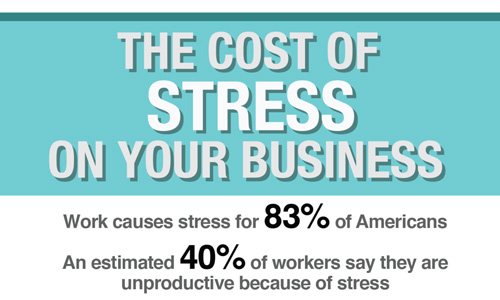Stress, anxiety and depression are serious conditions that lead to a number of symptoms and complications. It’s unfortunately all-too-common for sufferers to brush stress symptoms under the carpet and to try and ignore them but failing to realize the potential severity of stress is a big mistake which can come at a high cost.
Here we will look at some stress statistics that tell us not only how prevalent stress is but also how severe the repercussions can be if it isn’t brought under control.

According to the American Psychological Association and the American Institute of stress, the main causes of stress in the US are the following, in order:
- Job pressure
- Money
- Health
- Relationships
- Bad nutrition
- Media overload
- Sleep deprivation
This same source cites that:
- 77% of people regularly experience stress symptoms
- 74% of people experience psychological symptoms as a result of stress
- 33% of people living with extreme stress
- 48% of people feel they are more stressed now than they were five years ago
- 76% say that money was the leading source of stress (despite the earlier suggestion that job pressure was the main source)
- 48% reported finding it difficult to sleep at night due to stress
- 48% of people felt stress had a negative impact on either their personal lives or professional lives
- 31% of employed adults said they found it hard to manage work and family responsibilities
- 54% of people said that their stress caused them to fight with people closest to them
- 26% of people felt that they had been alienated from a friend or family member as a result of stress
- 51% of those surveyed experienced fatigue due to stress
- 44% experienced headaches
- 34% had upset stomachs
- 15% had a chance in sex drive
What to Make of These Statistics
It is common to read stress statistics such as these and while there are many consistencies you will also notice some differences cropping up across different sources of stress statistics. Precise numbers will vary greatly depending on how the data was collected and who specifically took part.
What appears to be clear though is that stress is a very widespread problem affecting a huge percentage of the population. It appears to be getting worse (most stress surveys suggest that people are now more stressed than they were X number of years ago – though it’s important to take into account that these answers may be skewed by bias) and it is costing the economy heavily. Apparently the annual costs to employers due to stress related problems in 2014 was $300 billion. Similar statistics also come from a survey conducted by the Labour Force Survey (LFS) in the UK last year. They found that 11.3 million working days were lost as a result of stress.
With work also being one of the leading causes of stress, there does seem to be something of a vicious cycle going on here: work makes us stressed, so we work harder, so we have to take more time off. This is something that decisions makers need to consider when allocating leave and otherwise making decisions that could have an impact on stress. Money is the other leading cause of stress and it’s interesting to think about how the two might be linked. Going a bit deeper into stress statistics data would be an interesting subject for a book like Freakonomics!
What’s also clear is that stress is impacting severely on our happiness, our health and our personal lives. It seems that the majority of us experience a worse quality of life because of stress, so it’s time to start doing something about it!




